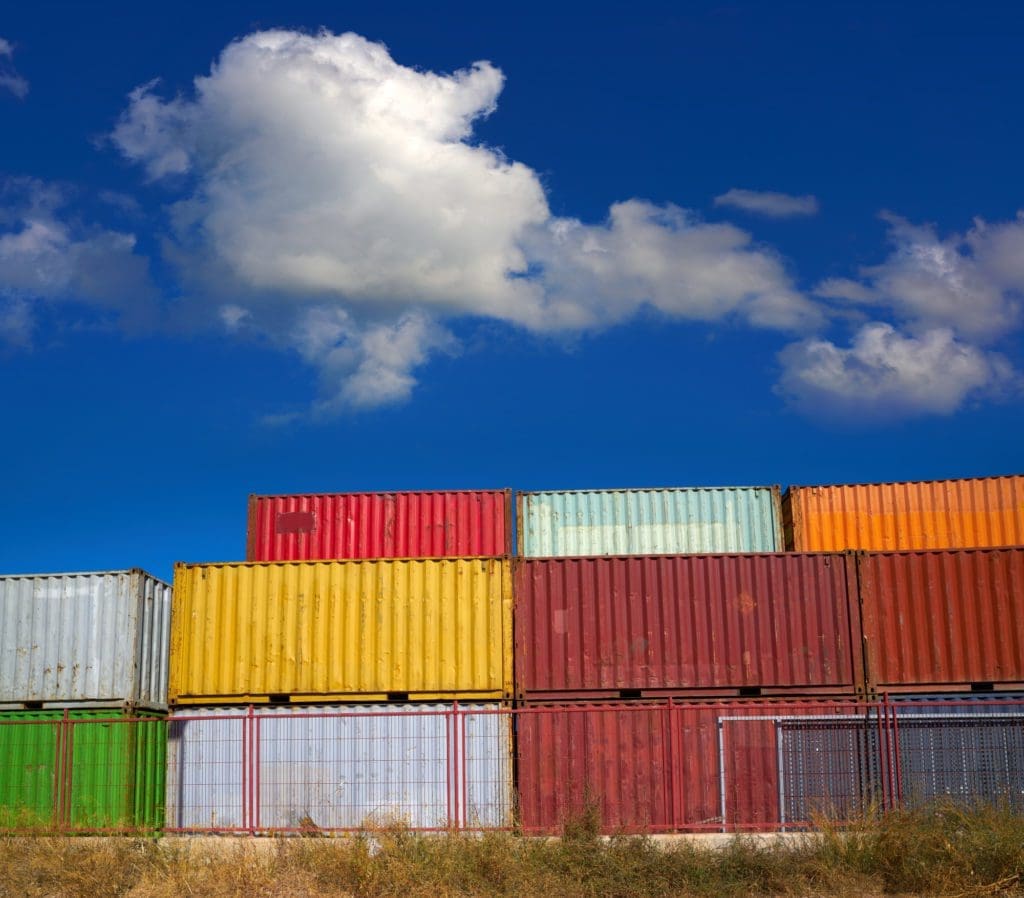
How Much Does It Cost to Buy Shipping Containers?
Curious about the different types of shipping containers and how much they cost. From sea containers, refrigerated containers, and open-top containers, this is your complete cost guide for buying metal storage containers.
The first real shipping container was built as a means of transferring goods from the back of a truck to a ship. In 1956, Malcolm McLean devised a large container that could be moved off the bed of a transport truck directly onto a ship.
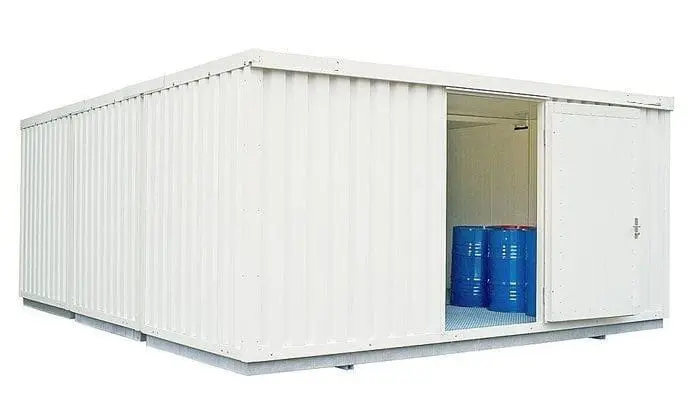
The concept exploded as shippers discovered that it was much less labor-intensive and much faster than hiring crews of dock workers to load ships with boxes and crates. Now, if you want to buy shipping containers, you can choose among the many types of shipping containers available depending on the different types of goods you need to ship.
One of the amazing conveniences of shipping containers is their ability to be stacked. Another significant benefit is that you can load them in advance and store them until you are able to move them onto a ship or to a new location.
Uses for Shipping Containers
Shipping containers are no longer just used for shipping. In many places, you can buy a shipping container for a home. Other uses involve building restaurants or studios out of used shipping containers. You can also use them to build hotels and offices and even swimming pools!
Other uses include:
- Storage
- Construction equipment storage
- Food services
- Mobile office space (e.g. oil field, construction site, etc.)
- An exhibition stand that will need to be moved from one place to another
- Off-grid living
Types of Shipping Containers
When purchasing a ‘new container’, this usually means it’s a one-trip container and has only been used to ship goods one way and then put for sale.
The reason for this is because the United States purchases a lot of goods from China and India. Cargo ships loaded with containers move these goods, and to avoid shipping empty containers back, Asian logistics companies sell them.
If you’re deciding whether to rent or buy new or used shipping containers, there are a few factors to consider:
- You should rent if you only need it for a short period of time and the cost of rental does not exceed the cost to buy
- You should rent if you don’t want to worry about the cost of moving the container because the supplier will do that for you
- You can buy used shipping containers if you’re not concerned about a little rust or the durability or the possibility there may be spilled chemicals present
- You should buy a new one-trip shipping container if you want to use it for shipping, live in it, or use it for a long period of time
General Purpose Containers Cost Guide
This is the most common type of shipping container. They are often called ‘dry containers’ and are fully enclosed units made of corrugated steel or aluminum with metal or hardwood floors.
Companies mainly use this cube-type container for shipping dry goods. They can be 10′, 20′ or 40′ long. The standard height is 8’6″ with a width of 8′.
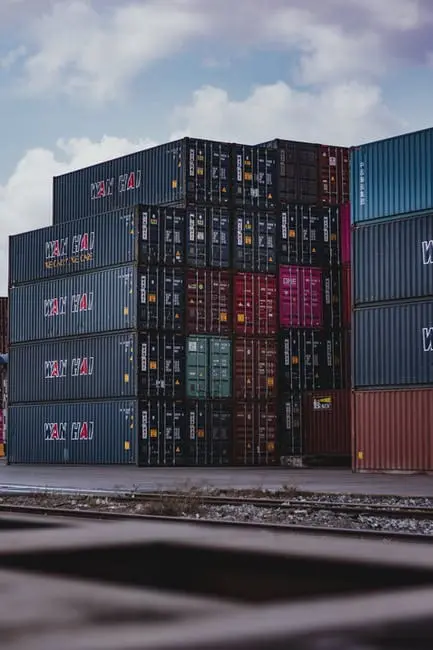
They are usually wind and water-tight, though you should check if there is a guarantee if you’re buying used.
These containers can cost $2,000 to $5,000 for a new 20′ container or you can get a used one of this size for $1,400 to $3,000.
Here’s a brief outline of your options:
- 10′ standard cube: new $3,600 to $7,500, used $4,000 to $7,000
- 20′ standard cube: new $2,000 to $5,000, used $1,400 to $3,000, rent $75 – $250/monthly (depending on location)
- 40′ standard cube: new $4,200 to $7,000, used $1,700 to $2,500, rent $120 – $350/monthly
- additional features:
- Interior liner for shipping liquids
- Interior locks for greater security
- Lock box
High Cube Container Cost
These are 40′ containers with an additional foot of clearance for extra large storage or shipping. The measurements of this type of shipping container are 8′ wide by 40′ long with a height of 9’6″.
The prices for these are somewhat higher and can be $4,300 to $7,500 for a new one. If you want to buy these as used shipping containers they will cost $1,900 to $2,600, depending on the location and the condition of the container.
Because of limited availability, renting a high cube will cost you more than the standard cube.
Open-Top Container Cost
Open-top containers do not have a roof, they just have removable bars and you can secure the top with a tarp after you fill the container. This type of container is easy to load or unload using a crane and the cargo can also be more easily accessed.
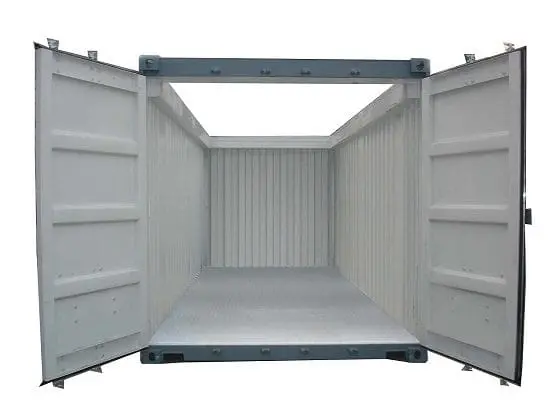
There are doors on this type of container, so you do have the option of accessing the contents from above or from the doors. Open-top containers are usually used to ship bulky equipment. They are also useful for over-height cargo.
Open-top containers are available in standard sizes of 20′ or 40′. The walls are the same height as those of standard containers.
The cost to buy or rent an open-top container is similar to that of the cube-type.
Tunnel Container Cost
Tunnel containers have doors on both ends of the container. They are used to facilitate the loading and unloading of cargo. This type of container comes in 20′ or 40′ lengths. To secure the contents of this type of container, you will need locks on both ends.
The cost of this type of container is higher than a standard cube container because of the second set of doors. You should expect to pay up to $1000 more for the container.
Open-Side Container Cost
The open-side containers have doors that open completely on the side to allow for easy loading and unloading of wide cargo. These doors fold back on themselves but will close and seal tightly.
You should expect to pay extra for these containers because of the cost of the folding doors. They will run at approximately an extra $2000.
Refrigerated ISO Container Cost
When shipping or storing perishable foods that require a low temperature, companies use refrigerated containers. Examples of such a need are meat and dairy, or fruits and vegetables. Pharmaceutical companies also use these containers.
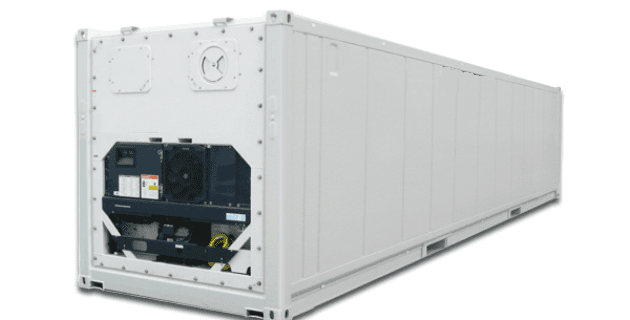
In the shipping industry, refrigerated containers are commonly called reefers.
Reefers have specialized floors that allow cold air to circulate under the cargo. The walls are insulated, usually with smooth steel on the outside and plastic sheeting on the inside of the insulation.
Some reefers have the integrated refrigeration units on the inside, others will place them on the outside of the container.
Reefers come in standard sizes of 20′ or 40′ lengths, but they’re also available as high-cube containers. You should expect to pay 50% more for a reefer, whether new or used.
You can also rent reefers from some facilities. Once again, you should expect to pay at least 50% more for this type of container. If you are planning to use it for storing produce, be sure it is ISO-certified.
Insulated or Thermal Container Cost
If you’re shipping perishable goods in the winter, you need insulation to maintain the internal temperature of a container. For example, fruits and vegetables need to be protected from the cold.
A thermal container will come with a means of regulating the temperature.
Once again, purchasing or renting this type of container is around 50% more expensive than a general-purpose, non-insulated container.
Half Height Container Cost
Half-height containers have an open-top design. The open-top is ideal for loading bulk cargo that’s heavy and dense. They are often used by the mining industry for carrying sand, gravel, ore, or coal.
Because of the heaviness and density of the cargo, they are built with reinforced sides and bottom. You can secure the open top with a removable hard cover, or with a tarp. These containers are also stackable.
Because of the reinforced nature of these containers, the cost is similar to that of a standard cube container. They are available in 20′ and 40′ lengths.
Flat Rack Container Cost
These are containers that have a steel base with two end walls that are strong enough to secure heavy loads to them. They are available in 20′ and 40′ lengths and can have collapsible sides that will be installed after loading the container.
Flat rack containers are used for pipes, heavy machinery, construction materials, and big reels. Costs for these vary widely and it’s best to contact a company that carries this type of container.
Tanks
ISO tanks are used for shipping liquid materials and usually measure 20′ in length. They are usually made out of anti-corrosive material such as steel. Some need insulation to maintain the internal temperature.
There are stringent safety standards for these tanks since many of the types of liquids can be toxic or hazardous.
You can purchase these tanks, but it’s best to get a quote for the cost because this varies widely due to the differing purposes for the tank. They are available new or used. If you buy used, be sure it is ISO-certified.
Where to Buy Shipping Containers?
Did you know that you can buy shipping containers online? Most of us don’t live near a port or even a shipping container warehouse. Many shipping container companies will have photos of their available containers and you can shop for your container like you can almost any other type of goods.
You can expect to pay to have your container shipped to your location. The price for moving the container will depend on the distance it has to be moved.
Contact Tuff Shipping Containers today to get a quote for your shipping container purchase or rental. We can find the best price for you!

Leave a Reply